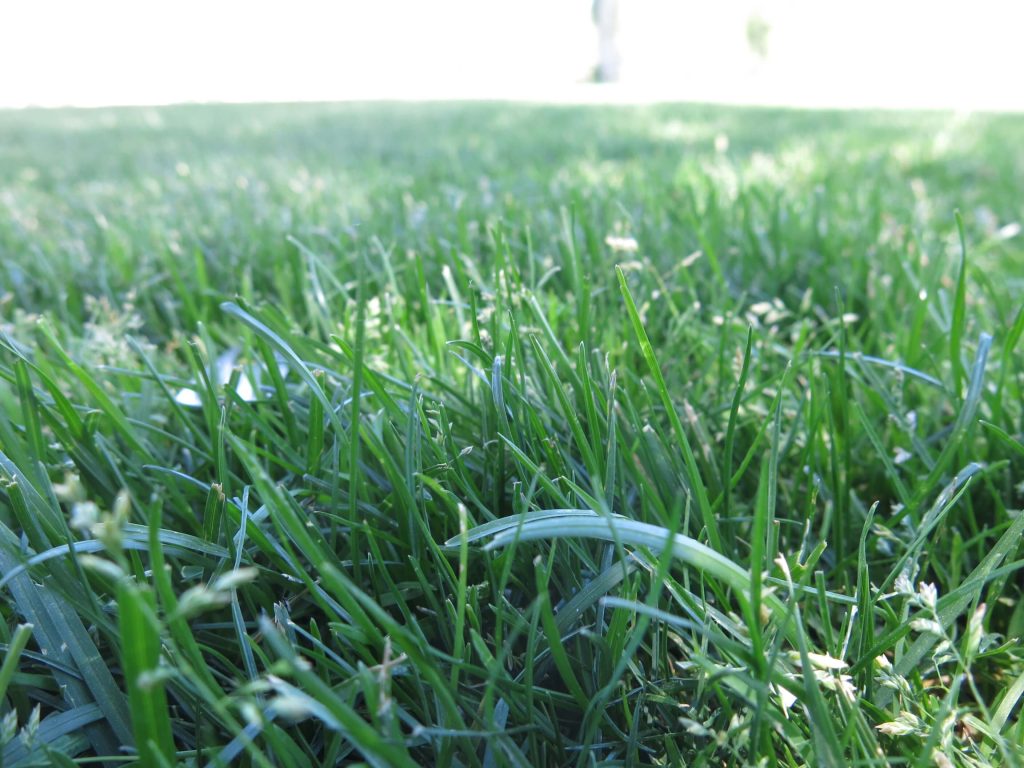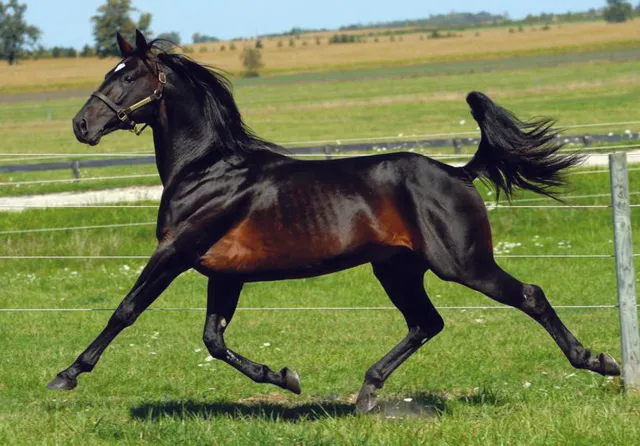A Guide to Bermudagrass, Teff, Alfalfa, Kentucky Bluegrass, Perennial Clover, Smooth Brome, and Bahia
One of the best ways is selecting grass or legume for their pastures or haysNeedssuitable. The following forages posed with specific goals in grassland management: Bermuda grass, Teffgrass, Alfalfa hay, Kentucky Bluegrass and Perennial Clover are all warm season crops commonly found on pasture.
Smooth Bromegrass is a cool-season crop that grows well when planted between late summer; Bahia Grass also known as Pensacola seed rates will be needed per acre to turn out good result
. Knowing its characteristics can help me plan the best suitability in terms of soil type, climate and requirement of animal species.
I personally never discard a single one because I reckon they all have something for me. For instance, if Bermuda grass grows well in warmer climates and Alfalfa hay is nutrient- rich.
This knowledge helps me better understand them in order to help maintain good pastures and produce healthy feed.
Key Takeaways
- Each type of grass or legume provide different benefits for livstock, and soil health.
- Knowing about them will help you make informed decisions on your pasture landscapes.
- Good management practices should not only increase forage systems quality and production.
Overview of Forage Grasses
Forage grasses are the basis for grazing systems, so it is important to obtain better panorama of them. They are an important source of food for farm animals and help ensure healthy crops.
In my itch for information I will key in on features and advantages of different forage grasses such as Bermudagrass and Teffgrass, with a little dabbling into Kentucky Bluegrass.
Bermudagrass Characteristics
Warm-season was the name of bermudagrass and it is a durable grass of high growth rate. I’d say this is perfect for warm, sunny areas with good drainage. It establishes rapidly and is drought tolerant so it is widely grown throughout the country.

It also has a root-system which is thick and that it aids in preventing soil erosion. My blades are okay, they have a medium + dark green colour.
In addition, Bermudagrass thrives in pastures and lawns by carrying great feed quality for livestock. However, I like it for its sturdiness and easy-going care regimen.
Teff Grass Profile
Teff grass is a warm season annual, fine thin stemmed grass. It grows fast and thrives in different soils. It does best in dry to average moisture well-drained soils and is drought tolerant once established. Which is great for variety of climates.
High nutritional quality Teff grass is valued for being high in protein (ranging from 5 to 15%, based on the type), iron and calcium.

It produces a good amount of palatable forage hence it is highly preferred by livestock. And, it can be cut many times during one growing season.
That’s why Teff grass is one of my other favorite recommendations for those looking to secure a high-quality source of forage.
Kentucky Bluegrass Benefits
Additional cool-season grass commonly found in pastures and lawns Kentucky Bluegrass I love its high shade of green and tenacity to set a thick sod. Good cold tolerance, suited to northern climates
It thrives in fertile, well-drained soils. It is also known for being a rebloomer with good established drought tolerance. Kentucky Bluegrass:

This grass is one of the best quality forage, and because it produces high production of dry matter livestock consumes all essential nutrients from this plant. It also helps soil health as a source of erosion control and more effective retention of water.
Legumes in Forage Systems
Forage systems rely mainly on legumes for providing good-quality feed as well improving soil health. They are useful for livestock nutrition and could increase the sustainability of pasture management.
Alfalfa Hay Fundamentals
Alfalfa hay is one of the top legumes for pasture meets. Since it is a source of protein, alfalfa grows well as feed for dairy cattle and other livestock.
I love it because of its wide range in types of soil that it will grow, although well-drained soils are preferred.

Alfalfa is known to be able contribute multiple cuttings throughout the year, allowing a farmer to harvest alfalfa during growing season.
Key Benefits:
- High protein content: 15-25%
- Good forages for ruminants
- Helps soil health due to deep roots
Another value of alfalfa is that it can help to improve soil fertility by fixing nitrogen. This means less reliance on chemical fertilisers and more sustainable farming.
Perennial Clover Varieties
Perennial clover is valuable legume in forage systems as well. It operates under species including red clover and white clover. The clovers are very good for grazing and hay making.
My experience is that red clover likes cooler climates while white clover prefer warmer surroundings. Good food for cattle Animal feeds belonging to the two classes are full of nutrients.

Benefits of Perennial Clover:
- Building Healthy Soils: Nitrogen Fixation
- Increased taste for animals
- Can be grown in compact weed free spots
These clovers can further help in enriching biodiversity of pastures. Their roots establish themselves in the soil and help to keep it from eroding, while also increasing its capacity for water retention, encouraging a more dynamic ecosystem.
Grassland Management Techniques
Successful grassland management techniques are vital when trying to preserve a healthy ecosystem. By doing such practices, it helps us to be more productive and is something that can be done for sustainability.
Two such varieties would be the planting of Smooth Bromegrass and mowing Bahia Grass.
Smooth Brome Cultivation
I have found that Smooth Brome is a useful cool-season prairie grass. It grows in dry, well-drained soils and is drought tolerant. This soil is prepared from my part, and for this I cut the earth up to 3-5 inches.
Seeding rate should be approximately 15-20 lb. of seed per acre I like to plant in spring and early fall when the soil temperature averages between 50°F and 85°F, then watch my moisture levels closely after planting.

I also mow and fertilise to make them tn hazard areas grow. Mowing at the proper time prevents seed-head formation and stimulates tillering which helps create a thicker stand. Nitrogen application can improve growth, especially in the spring and fall.
Bahia Grass Maintenance
With Bahia Grass, the main thing to remember is healthy soil and frequently mowed. Every few years you should test soil for pH and nutrients. A pH range of 5.5 to 6.5 is ideal for this grass The results guide me to apply lime or fertiliser as necessary for the plant.
The grass cuts should be at 4 inches and done on a regular basis. This will help avoid seeding’s of weed and healthier growth. I also check moisture levels, especially as we experience dry spells” (Bahia Grass can withstand drought but does best with consistent watering)

Rotation grazing is very important to stop the sheep from overgrazing and give grass a chance to grow back. Best management practices will make sure Bahia Grass stays healthy and vigorous throughout its life cycle.
Soil Preparation and Fertilization
Healthy grass and forage growth depend on proper soil preparation and fertilization. Different types of grasses and hays have specific requirements. Know Your Soil Types and Select Appropriate Fertilizers.
Soil Types and Structure
Grass also grows differently depending on the type of soil. The three main types of soil I tend to concentrate on are sandy, clay and loamy.
- Sandy soil will drain quickly, but often not hold available nutrients.
- Clay holds water well, but often becomes hard packed reducing root growth.
- Loamy soil is a balanced mix. This is important for decent drainage and it holds nutrients properly.
First, I test the soil to see how acidic or alkaline it is and check its nutrient status. Most grasses prefer a pH in the range of 6.0 to 7.0. If soil is overly acidic, I add lime. Sulphur, for alkaline soils Adding organic matter such as compost or well-rotted manure also enriches soil structure.
Fertilizers and Amendments
Choosing the proper fertilizers to put on grass The three major nutrients that I often refer to are nitrogen (N), phosphorus (P) and potassium (K). These are complementary — each helps different kinds of growth.
- Leaf Green up Nitrogen Fertilizer
- Phosphorus — phosphorus helps to develop root and flowering.
- Potassium has to do with drought resistance in plants and the robustness of your plant health.
Fertilizer are given as per soil test. Compost, bone meal or fish emulsion are all also organic choices. I like to fertilize twice a year (three times, if you can make it!) in spring and fall for steady growth.
Slow release fertilizers can result in a slower, time released distribution of nutrients as well. This encourages strong grass health all year round.
Water and Irrigation Management
Grasses, such as Bermudagrass and Teff grass; legumes like Alfalfa hay) — which grow using irrigation. Good water management is important to achieve optimized growth, and that plants are not stressed.
But the methods of irrigation depend on which crop and under what weather situation! Common methods include:
- Drip Irrigation: Delivers water directly to the roots, saving on water usage.
- Sprinkler Systems: Sprays water similar to natural rainfall and covers a broad area.
- Surface Irrigation: it happens when field is flooded, done for particular kinds of grasses.
Different plants need different levels of water, so it is important to know their requirements. For example:
During the hotter months,
- Bermudagrass requires higher amounts of water for keeping it lush and green.
- Kentucky Bluegrass also does well with regular moisture but can stand some drought.
- Foraging: Teff Grass is more drought-resistant than other warm-season forage.
When I water, sometimes there can be overwatering and underwater conditions; so i monitor soil moisture to control those outputs. I rely on the help of tools such as soil moisture sensors to monitor water level.
Watering Schedule:
- Ideal time for watering is early morning or late afternoon.
- Less of a watering, but be sure not to wet the tops — you should water deeper.
With that also goes the rain fall. Not always having to irrigate can help save water and provide optimal growth
Using sound irrigation practices grows robust, healthy plants in a water-conservative manner.
Insets Control and Disease Management
Controlling pests and diseases is also important to ensure that grass for hay remains healthy. These are the main points I hit with it;
Identify Common Pests: What pests can affect my plants?. Common pests include:
- Aphids – tiny, green insects that suck the juice from a plant.
- Grubs: The larval stage of beetles that live underground and eat roots.
- Weevils — these beetles can weaken plant structures.
Keep an Eye on Diseases: They can stunt the growth and yield. Make Sure To Monitor The Following : white tick proper [idea].
- Fungal infections, e.g. rusts and blights
- Bacterial Wilt – Leaves turn yellow and wilt.
Prevention Practices: I keep my plants healthy. I follow these methods:
- Crop Rotation: Switching the type of grass or crop that is planted in a certain location.
- What You Can Do Healthy Soil: Compost and good fertilizer builds stronger plant roots.
Control Options: If pests or disease are found I can use different methods:
- Biological control: – Releasing ladybug species in fields.
- Chemical Conduct: Typical Problem resistant Pesticides.
Keep an eye on your plants regularly. This catches issues early which are easier to deal with.
Harvesting and Storage Methods
The grasses and hay which I harvest can’t really afford to miss their time. For me it is when the plants are in their prime growing stage. With most grasses, I aim to cut them before they flower for the best quality.
Harvesting best management practices;
- Bermudagrass: Mow at 4-6″ Typically, this is late spring to early summer.
- Teff Grass: Mow at 30 inches tall. This occurs usually 7-12 weeks from planting.
- Alfalfa Hay – Partial bloom (10-15%) for good protein levels on harvest.
- Kentucky Bluegrass: This grass type should be mowed twice throughout the growth period during spring and early fall.
- Drying: After Harvesting I laid the cut grass down in a thin layer, loose and perfectly perforated for moisture to escape. This helps prevent mold.
Storage Tips:
- Make sure the hay is < 15% moisture before storing.
- Clear out on a closed shade to avoid fading due to the weather.
- Cover hay with tarps or in the barn This shields it from the rain and sun.
How often do you check stored hay? For us to capture all the nutrients and avoid spoilage, it comes down to picking in a proper manner (no bruising/crushing) and storing properly.
Nutrient Analyzer’s and Feed for Livestock
I mean, when I compare the nutritional content of various grasses and hays — there are some big differences. All types have awesome values for animal feed!
The Proteins in Bermudagrass are Suitable for Dairy Cows. It is high in fiber as well.
With a calcium content loading of 1.5%, Teff Grass has high digestibility for cow’s consumption Best for young livestock.
Bright grain is notable for its pioneers in protein and energy, trailed by oat hay. This is also suitable for all kind of livestock &especially at the time when animals are in their lactation.
Supply: Getty Images More moderate protein, more fiber Kentucky Bluegrass Grazing animals are its best purpose.
Another excellent source for white-tailed deer when it comes to achieving a good balance of quality protein and fiber is Perennial Clover. Rotates well in fields, helping to better over all soil health
Smooth Brome is also low in protein but palatable to livestock.
Bahia grass makes a good sod, and also produces fair grazing with mediocre nutritive value.




